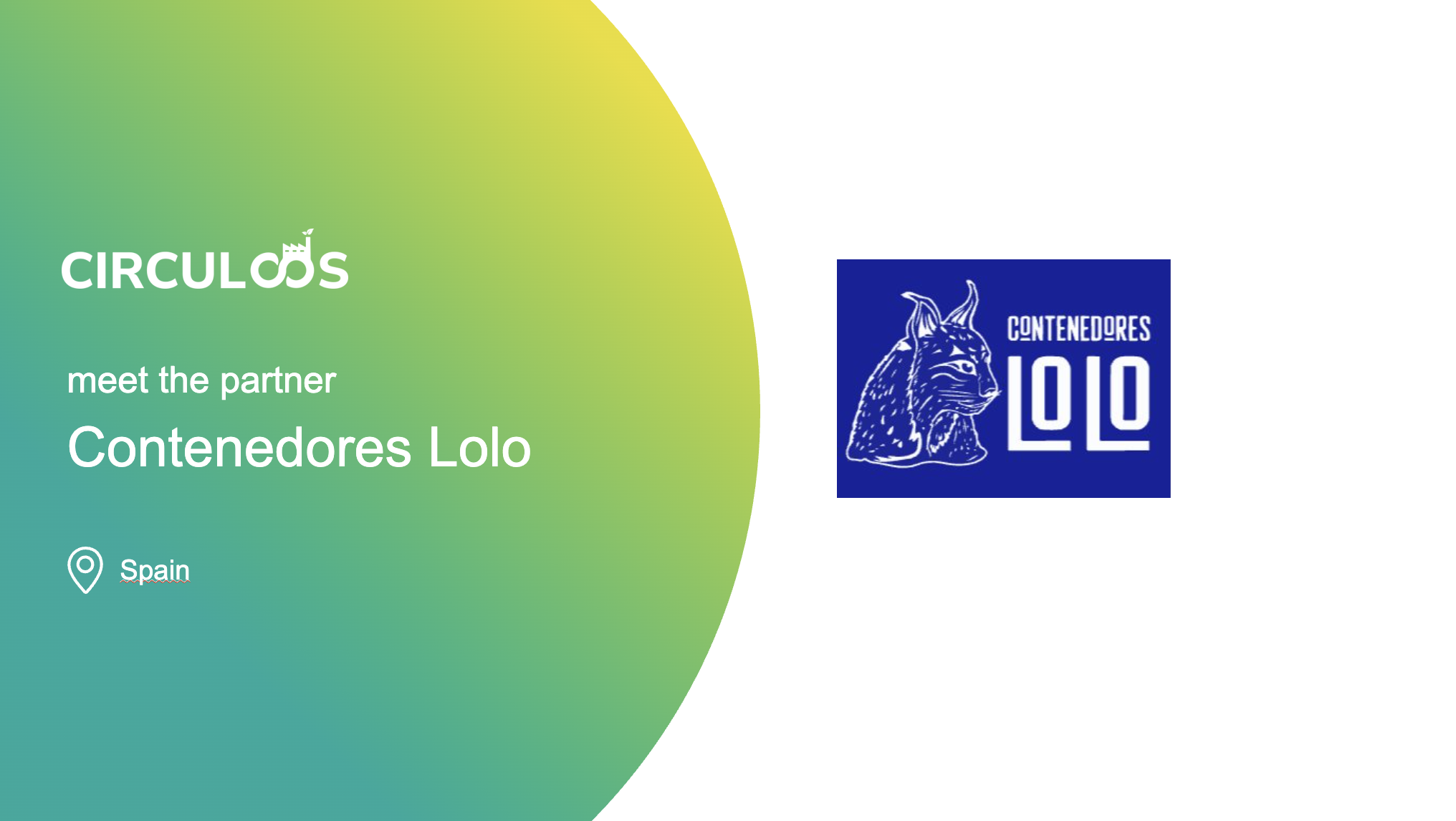Today, we’re speaking with the Jose Manuel Martin from CONTENEDORES LOLO, a key partner in the CIRCULOOS project bringing hands-on expertise from the Spanish manufacturing sector. Their involvement focuses on exploring how circular practices can be realistically applied in industries that rely heavily on materials like plastics and metals.
As part of the Spanish pilot, CONTENEDORES LOLO is testing how circular supply chains can function not just in theory, but in day-to-day manufacturing environments. In this interview, Jose Manual shares their perspective on the challenges small and medium-sized businesses face when adopting circularity, how digital tools can help overcome them, and why collaboration is essential to making the circular economy work – especially for traditional manufacturers.
Let’s dive in!
What is your role in the CIRCULOOS project?
At CONTENEDORES LOLO, our role is to bring real-world experience from the Spanish manufacturing sector into the CIRCULOOS project. We’re especially focused on how circular practices can be applied in industries like ours – where materials like plastics and metals are key. We’re contributing to the Spanish pilot to help test and demonstrate how circular supply chains can work in practice, not just in theory. Our aim is to show how even traditional manufacturing can transition toward more sustainable, circular processes.
What specific challenges or opportunities do you hope to address or explore through your involvement in the project?
One big challenge is how to manage and trace materials across their full life cycle—from production and use, to repair, reuse, and eventually recycling. Right now, it’s hard to get that full picture, especially for small businesses like ours. CIRCULOOS gives us the opportunity to explore digital tools that can improve visibility and help make smarter decisions about how we use and reuse materials.
How does your company’s participation in the CIRCULOOS project relate to your previous experiences in sustainability, digital transformation, or circular practices within your manufacturing processes?
We’ve already taken some steps toward sustainability—for example, by integrating recycled materials and improving waste management. But this project allows us to go further, by connecting those practices to new digital tools and supply chain strategies. It’s a chance to transform how we plan, produce, and collaborate with others—using technology to scale up our impact.
How do you plan to collectively engage in knowledge-sharing and collaborative efforts, such as workshops, brainstorming sessions, or technical discussions, to enhance the project’s outcomes?
We’re excited to share our experiences and learn from others. We plan to be active in workshops, pilot reviews, and co-creation sessions. By working closely with technology providers and other manufacturers, we’ll help shape solutions that work not only for large companies but also for SMEs like ours. We believe that collaboration is the fastest path to innovation.
How do you see your involvement in the project contributing to the growth and innovation of the broader manufacturing ecosystem?
By participating in CIRCULOOS, we hope to become an example of how traditional manufacturers can embrace digital and circular approaches. Our involvement helps ensure the solutions developed are practical, scalable, and applicable to a wide range of industries. We’re not just contributing to a project—we’re helping build a roadmap for how others in our sector can evolve.
What challenges do you foresee in adopting circular manufacturing practices within your organisation?
There are definitely challenges. For one, circularity often means rethinking your entire process—from procurement to production to logistics. That’s not easy, especially when margins are tight and resources are limited. Another challenge is data—gathering it, trusting it, and using it to make decisions. That’s why the digital backbone of CIRCULOOS is so important. If we can streamline those processes, circularity becomes much more feasible for small manufacturers like us.
What is your future vision of the project?
We hope that the tools, strategies, and partnerships built in CIRCULOOS don’t stop when the project ends. Ideally, the platform becomes a go-to resource for companies looking to make their operations more circular. We want to see the project’s ideas spread throughout Europe’s manufacturing sector—especially among smaller companies that often get left behind in digital transformation.
How will the Circular Economy change the manufacturing sector?
The circular economy is going to change everything. Instead of producing something, using it, and throwing it away—we’ll design products with reuse in mind. That will mean fewer raw materials, more creativity, and more responsibility. For manufacturers, it’s a big shift, but also a huge opportunity to innovate, save resources, and build stronger connections across the supply chain.


